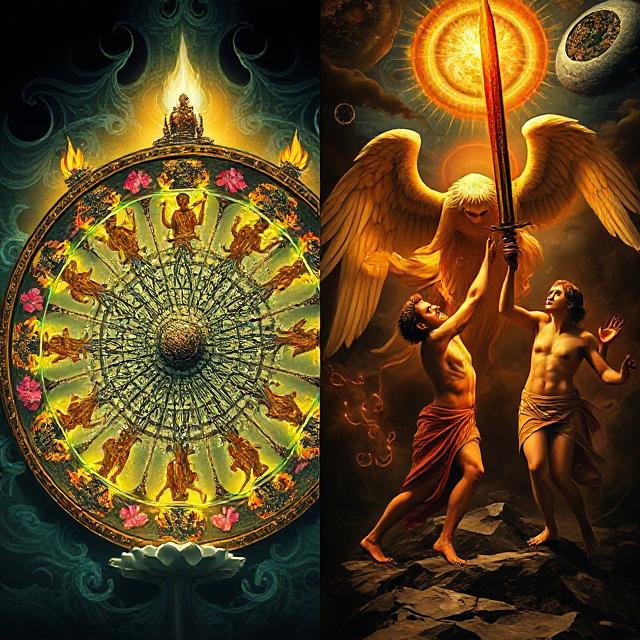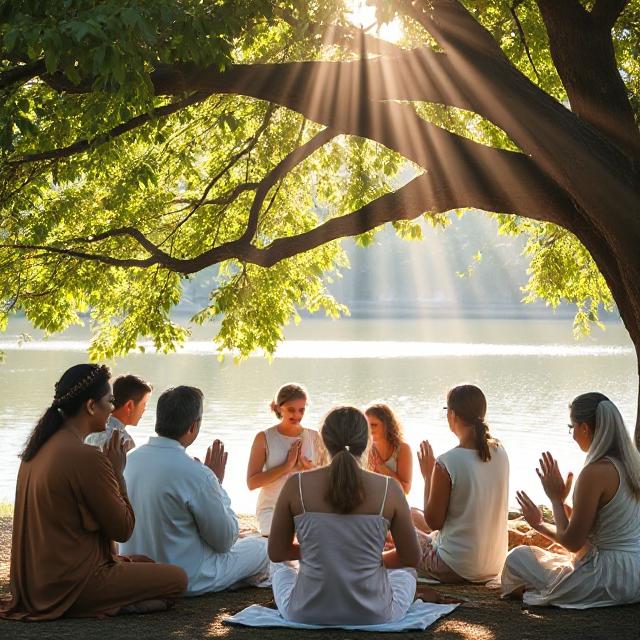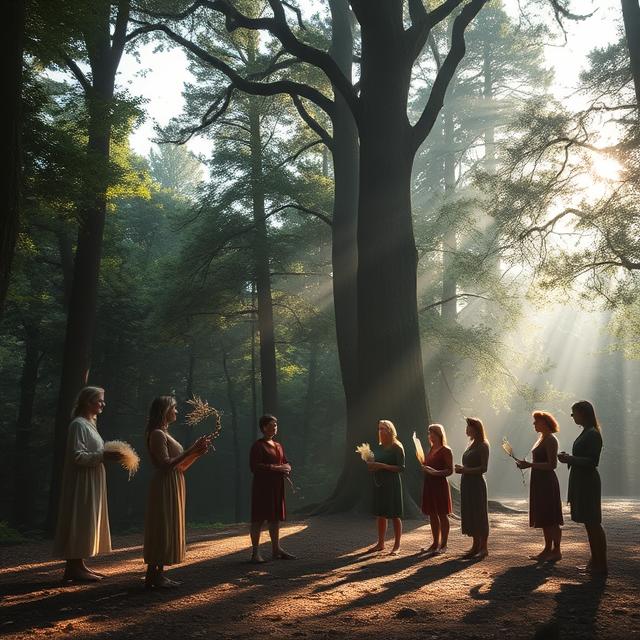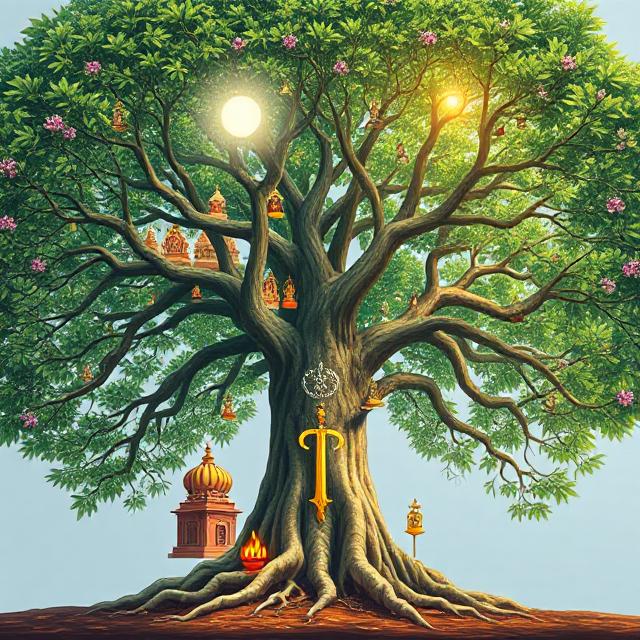Your cart is currently empty!
Comparative Religion – Wisdom Across Worlds
Table of Contents
Introduction
Every religion seeks to answer the same timeless questions:
- What is the nature of reality?
- Why do we suffer?
- What happens after death?
- What does it mean to live a good life?
In this section, we explore how different religious traditions — from East to West, ancient to modern — approach these universal mysteries.
We don’t seek to declare one “right,” but to understand each through the lens of philosophical comparison and spiritual inquiry.
What You’ll Discover
- ✝️Comparative frameworks between Christianity, Islam, Hinduism, Buddhism, Judaism, Daoism, and others
- Sacred texts placed side by side — Qur’an vs Vedas, Gospels vs Upanishads
- Common concepts like suffering, salvation, and ethics in multiple worldviews
- Philosophy of religion: bridging belief with reason
Featured Articles
-
Buddhist Anatta vs Hindu Atman: Is There a Soul?
-
Islamic Surrender vs Existential Freedom: Where Is True Power?
-
Karma vs Divine Justice: Who Deserves What and Why?
-
Logos vs Sunyata: Christianity Meets Buddhism
-
The Golden Rule Across Cultures: Universal or Coincidence?
-
What Is Comparative Religion and Why Does It Matter?
Sacred Text Analysis
- Vedas vs Bible: Origins of Knowledge
- The Qur’an and the Tao Te Ching: Two Views on Flow
- The Book of Job and the Bhagavad Gita on Suffering
Related Thinkers & Schools
- Thomas Aquinas – Christian rationalism
- Al-Ghazali – Islamic mysticism and skepticism
- Shankara – Advaita Vedanta and non-duality
- D.T. Suzuki – Zen Buddhism and Western comparison
- Martin Buber – Dialogical theology
- Karen Armstrong – Modern comparative religion
Quotes Across Traditions
“God is closer to you than your jugular vein.”
— Qur’an 50:16
“Atman is Brahman.”
— Chandogya Upanishad
“Be still, and know that I am God.”
— Psalm 46:10
“Form is emptiness; emptiness is form.”
— Heart Sutra
Weekly Series
Faith & Reason Fridays
Every Friday, we publish a short reflection, question, or comparison involving two traditions.
Sign up here to get it by email
Final Thought
Religious traditions are not competing answers — they are symphonic attempts to make sense of the unspeakable.
To compare them is not to flatten them, but to draw deeper from each.










